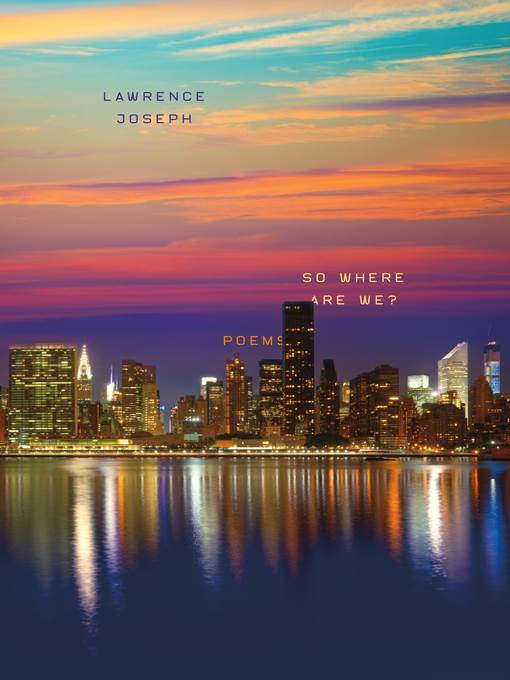
So Where Are We?
Poems
- اطلاعات
- نقد و بررسی
- دیدگاه کاربران
نقد و بررسی

July 17, 2017
Poet and attorney Joseph continues where 2007’s Into It left off, observing from inside the bubble a nation at war with itself and with others. “So where are we? The fiery/ avalanche headed right at us—falling,// flailing bodies in midair,” he writes, trying to take stock of the post-9/11 landscape. “What year? Which Southwest Asian war?/ Smoke from infants’ brains// on fire from the phosphorus/ hours after they’re killed, killers// reveling in the horror.” With lawyerly intelligence, Joseph dissects a litany of contemporary horrors related to war, the police state, and economic precarity. His tight, dense, formally consistent, and affectless lyrics state the facts without revealing a subjective stance or emotional involvement: “the question in this Third/ Industrial Revolution is who owns and controls/ the data. That’s what we’re looking at, labor cheap,/ replaceable, self-replicating, marginal, contracted out/ into smaller and smaller units.” For some readers, “to call out fact” won’t be enough, and Joseph’s repeated allusions to a privileged downtown life and love will remind them of the author’s relative inoculation against the worst of the book’s subjects. But for others, the collection’s extraordinary power will lie in bearing witness to the “switchblades then gunshots, police in riot gear,/ media coverage, front page headlines.”

Starred review from June 15, 2017
Can one write religiously based poems without being trite? If you're Joseph, both a poet (Into It) and professor of law at St. Joseph's University, you certainly can. Early on in his latest book, spiritual and religious themes resonate. The poems are collage-like and loaded with irony and anger as the poet lists episodes of violence, murder, bombings, Hellfire missiles, and the ashes of 9/11. Written as prose poems and in free verse, the pieces here are suggestive of Willem de Kooning's style of abstract expressionism. Somewhat recognizable figures rise off the page as the poet calls forth resonating images: the titles of songs, sunsets and sunrises, and war scenes with shrapnel and fire. He fuses these with observations usually concerning light. God's here. As Joseph says, "And how long, / my God, have I cried out the violence to you, but you do not/ intervene." VERDICT One can make a case for this book being one prayer composed of 23 parts. These poems may be prayerful, but they're not pretty or reverent. For all readers.--C. Diane Scharper, Towson Univ., MD
Copyright 2017 Library Journal, LLC Used with permission.

August 1, 2017
The factual horror the news delivers each day finds a different order in Joseph's finely crafted sixth collection. Opening with A Fable, a love letter of sorts to post-9/11 New York But is there a more beautiful cityparts / of it, anyway? Joseph explores the geography of our current state of affairs while looking to history as a guidepost. In Syria, the speaker reports journalistically on the war, yet the misery becomes tactile, personal, lyrical. This poet, a lawyer by training, knows how to shape an argument, writing about Detroit, where he was raised, in Here in a State of Tectonic Tension, citing the evidence of a once-great city's fall and destruction. In Made of This, Sensory Fact, Joseph presents delicate stanzas made up of short lines that cast a spell of passion and sensuality. These powerful poems reach across time and distance, public and private, fact and feeling to trace the unity of the human experience.(Reprinted with permission of Booklist, copyright 2017, American Library Association.)




دیدگاه کاربران